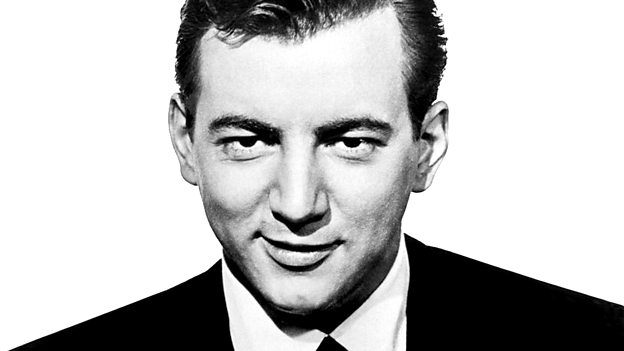
To say Bobby Darin was “unique” does not do him justice. From hard-scrabble beginnings in East Harlem, Bobby overcame a challenging start to life to become probably the most versatile performer of the ’50’s and ’60’s. He was able to accomplish much in spite of – or because of? – the knowledge that his time on earth would be brief.
Walden Robert Cassotto was born May 14, 1936 in East Harlem, New York. His “street cred” was established even before he was born; he had a grandfather – “Big Sam Curly” – who was a minor Mafioso and died in prison. His grandmother was “Polly” Walden, a vaudeville singer. Polly’s daughter, Nina Cassotto, bore Bobby when she was only seventeen and unmarried. Subsequently, Polly and Nina decided to raise little Robert as Polly’s son and Nina’s little brother. I have recently found this situation in the life of another legendary performer, Eric Clapton. In 1968, Darin was considering entering politics. Only then did Nina tell Bobby the truth. By all accounts, he was devastated. Nina took the identity of Bobby’s birth father to her grave.
Early in life Bobby proved proficient on many instruments and decided to move to the Bronx and attend Bronx High School of Science, from which he graduated. Later in life, Bobby would say he acquired his arrogance at this hi-tone school as he began to over-compensate for his humble beginnings as he dealt with his more affluent school mates. BHSS is a “magnet school”, a term that is new to me – though my wife was happy to tell me she’s known the term for years. For the similarly unenlightened, a magnet school is one that draws students from across established geographical school boundaries. Bronx High actually has several notable alumni. Eight graduates have won Nobel Prizes, six have won Pulitzers, putting Bobby in impressive company. Other grads include Robert Moog (inventor of the synthesizer that bears his name), author E.L. Doctorow (Ragtime, Billy Bathgate), Stokely Carmichael (Black Panther Party), Dominic Chianese (“Junior Soprano”), Jon Cryer, Jon Favreau (Swingers, MCU director) and Don Kirshner.
The story is true that one night while walking past a Chinese restaurant, Bobby noticed the neon sign and that the “MAN” of “Mandarin” was burned out. He looked up and saw his stage name lighting up the littered sidewalk; “DARIN”.

By 1955, Darin found himself in the famous Brill Building as one half of a songwriting partnership he had started with fellow BHSS alum Kirshner. The two were writing jingles when Bobby met singer Connie Francis. He co-wrote several songs for her but more importantly the two fell in love, so much so that they planned to marry, much to the chagrin of Connie’s domineering father, who summarily dismissed the idea. Bobby and Connie talked about eloping but the relationship soon dissolved. Interestingly, later in life Francis said that not marrying Bobby was “the biggest mistake of her life”.
Bobby was signed to Atco Records – an Atlantic subsidiary – as a writer and arranger when he decided to record one of his compositions himself. Disc jockey Murray “Murray the K” Kaufman had a mother who was a songwriter. Jean Kaufman called her son one day complaining that she had a great idea for a song about taking a bath but she was making no headway. Kaufman mentioned the phone call to Bobby and the two chuckled about it, Kaufman scoffing about his mom’s silly idea. In a typical act of bravado, Bobby bet Murray that he could indeed write a song containing the line “Splish splash, I was takin’ a bath” and he did just that, co-writing it with Murray who used a pseudonym so as to avoid any suggestion of payola.
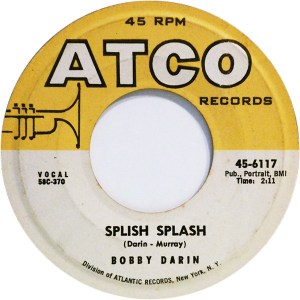
“Splish Splash” has been called a novelty song but it is much better than that. I’ve often considered it to be the origin of “blue-eyed soul” as Bobby delivers it in an outstanding R&B/rock ‘n’ roll manner and he comes off sounding like one of the better black singers of the day. Indeed, at the time, many who heard it for the first time assumed the singer was black. The song – featuring Al Caiola on guitar – kickstarted Darin’s career and was hugely successful, reaching #3 on the pop charts and #2 on the R&B listings. It remains one of the most recognizable and beloved songs of the golden era.
So, rock ‘n’ roll was how Darin started and his next entry into the Top Ten of both the pop and R&B charts was another rocker, the excellent “Queen of the Hop”. Bobby then tried his hand at a smoother sound with another song he wrote, “Dream Lover”, that went to #2 Pop, #4 R&B and #1 in the UK. Bobby went smoother still with “Mack the Knife”, a landmark recording for Bobby that became his most successful single reaching #1 in the US and the UK and even reaching #6 on the R&B chart. At the 2nd Annual Grammy Awards held in November of ’59, Bobby earned Record of the Year for “Mack the Knife” and he also won Best New Artist that night.


The success of “Mack the Knife” – a finger-snapping tune in a Sinatra vein – caused Darin to follow his muse into a decidedly more pop/supper club style. His very next single was the similar sounding, beautifully silky mid-tempo Top Ten number “Beyond the Sea”. The dawn of the 1960’s saw Darin taking a more adult approach to his music but certainly not restricting his sound. In 1960, he also released an album titled For Teenagers Only and he even tried his hand (or “hands”) at some instrumental tracks featuring his piano playing. For the kids, he released “Things” in ’62 and they rewarded him by sending it to #3 on the charts.
1963 was a new year and Bobby took on yet another genre; country and western. “You’re the Reason I’m Living” (written by Bob) was a single that also went to #3 and another of Bobby’s excellent compositions, “18 Yellow Roses”, was a Top Ten number. Bobby nails the country/pop sound so well with this track that for years I thought this was sung by Marty Robbins. Never one to sit back, Bobby also spent part of ’63 exploring folk music, releasing two albums of folk songs near the end of the year. It’s actually really difficult to trace chronologically Darin’s album releases and to discuss the various arenas in which he plied his trade. By way of explanation, let’s look at a run of LP’s Bobby put out between 1962 and 1965:
- Bobby Darin Sings Ray Charles (1962) — R&B/soul
- Things and Other Things (1962) — Top 40-style pop
- Oh! Look at Me Now (1962) — big band
- You’re the Reason I’m Living (1963) — country
- Earthy! (1963) — folk
- From Hello Dolly to Goodbye Charlie (1964) — big band
- Venice Blue (1965) — pop/orchestral standards/Bennett style
Venice Blue does deserve a mention if only for the stunning title track. Bobby’s recording career then truly entered a wilderness of sorts. His chart appearances virtually dried up – he would hit the Top Ten one last time in 1966 with Tim Hardin’s “If I Were a Carpenter”, another song that for years I had no idea was sung by Darin – he moved into television with his own variety show and regularly made public appearances. In the late ’60’s his catalogue becomes…well, strangely diverse, even for Bobby. He would release albums of show tunes before fully embracing folk rock and soft rock/adult contemporary with records released on his own Direction label and later on Motown. He attempted total reinvention of a sort by releasing Commitment in 1969 under the name Bob Darin. The record was produced by Darin and contained all original songs.
If Bobby Darin’s recording career was all there was to him, he would still be a notable and uncommon figure in music history. But there is so much more. Darin appeared in more than a dozen movies throughout the ’60’s, often writing the music for films he appeared in. Come September (1961) starred Bobby along with Rock Hudson and Gina Lollobrigida and features Bobby Darin and His Orchestra doing the theme song. It was on this film that Darin met and fell in love with his co-star, Sandra Dee. Darin’s relationship with Dee deserves its own post but suffice it to say that the two were married from 1961 until 1967 and had one child, a son, Dodd. The couple would make two more films together, delightful comedies in the Rock Hudson/Doris Day style.
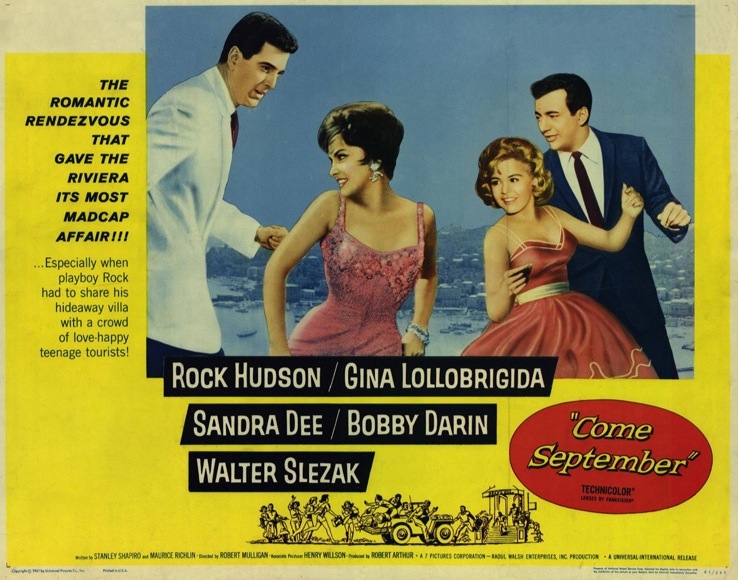
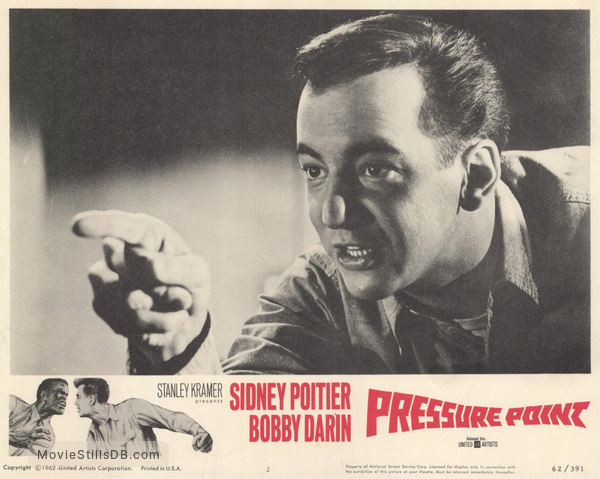
Bobby appeared in no less that five films in 1962. In Too Late Blues, Bobby plays a jazz musician who wants to stay pure but is asked to compromise his art for commerce. The gritty film was the creation of John Cassavetes who – like Bobby’s character – envisioned his film a certain way only to have the studio intervene. Bob then played a secondary role in the remake of State Fair in which he was paired with cutey Pamela Tiffin. Darin was then second-billed in Hell is for Heroes, a war movie starring Steve McQueen and also featuring Bob Newhart and James Coburn. Next up was a charming romcom Bobby made with Sandra Dee, If a Man Answers. Bobby did part of the music for this film that also featured Cesar Romero and Stefanie Powers. Finally for this prolific year, Darin made the bold move of playing a neo-Nazi in Pressure Point, a hard-hitting film also starring Sidney Poitier and Peter Falk that is sometimes uncomfortable to watch. Suffice it to say that Bobby was highly visible on-screen in 1962; these films were released in February, March, June, October and December and five of his 13 films were released in this year. The following year, he would receive an Academy Award nomination for his work in Captain Newman, M.D. (1963).
“Years ago I had the choice between ethnic and plastic, and I chose plastic. And twelve or thirteen years later, it dawned on me that I’d chosen the wrong one.”
Darin was among a handful of entertainers that supported Robert Kennedy’s 1968 presidential campaign and had been traveling with the senator when he was assassinated at the Ambassador Hotel. This tragedy combined with learning about his parentage and the changing of the musical landscape caused him to rethink his professional and personal lives and lead him to spend some time in seclusion living in Big Sur, California. The results of this seclusion were easily seen in Bobby’s appearance. He – like many performers – suffered thinning hair early in life and wore a toupée. This for Bob was emblematic of the artifice of his life and now the “rug” was jettisoned. Bob grew a moustache and took to wearing denim. His real mother’s revelation made him think his whole life had been a lie. It made him reassess his chosen career path. He now felt he’d “lied to gain fortune and fame”. That may have been an excessively harsh thought but it nevertheless made him want to shed his image and make message music. When it came to his nightclub act, Bobby sought to combine his two “selves” by performing “Mack the Knife” but also strapping on his guitar and singing message songs like “Simple Song of Freedom”. Club owners and audiences alike struggled to accept this and this added to Bob’s frustrations.

On a more personal note, Bobby’s affiliation with Motown Records has always fascinated me. I always feel like it is a major achievement for a white artist to gain the acceptance of Berry Gordy’s label that has long been a bastion of some of the best black music ever made. Other white artists who recorded for the label like Bruce Willis, Rare Earth and Canadian R. Dean Taylor loom large in my legend. Darin was only signed to Motown for the last two years of his life and had no hits. There is a compilation CD devoted to this period, the music on it being described as ambitious but tacky, the hopping between styles Bob had become known for being frustrating to the listener.
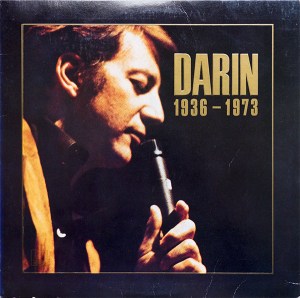
Darin 1936-1973 was an album released posthumously on Motown that I owned for years on cassette. Several years ago, I purged a lot of my tapes as my music collecting shifted away from this format. Unadvisedly, this album was one of the cassettes I “passed along” to our local thrift store. One fine spring morning as my wife and I were garage saling, didn’t I come across this cassette – and many others I had donated – at one of the sales. I had to engage the homeowners about this and the couple amusedly told me that their senior citizen father had bought these tapes but was now done with them. The old guy – twenty years my senior but more my speed – ambled over and we spoke about Bobby. He told me he had a book on Bobby in the house and he went in and presented it to me. I left with my Bobby cassette that I re-bought and the free Roman Candle biography. This is just one of the many “garage sale miracles” my wife and I have enjoyed. I’ve since bought Darin 1936-1973 on vinyl. I love the album.
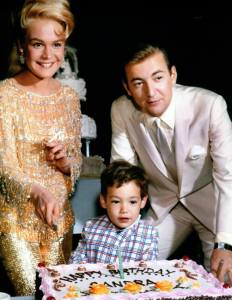
Consider all of this. Consider all that Bobby Darin had accomplished in his career, including many things we haven’t fully explored here. Then take into account the fact that, as a child, Bobby had endured poor health. Several bouts with rheumatic fever had left him with a severely weakened heart. Darin had attacked the entertainment industry with the fervour of one who had been told by doctors that his life would be short. Indeed, an early prognosis suggested he may not make it out of his teens. Subsequently, a lot of the stories of Bobby’s arrogance and burning ambition have to be considered in the light of the fact that Bobby lived his life knowing he could and likely would die before he accomplished all that he wanted to. There was no time to gently plot a patient course through the entertainment industry. Late in his career, Bobby would often have to take time out of performances to sit in the wings hooked up to oxygen. I always consider his limited breathing capacity when I hear him hit a particularly grand and sustained note.
In 1971, Bobby had received two artificial heart valves. Near the end of ’73, Darin had a dental visit planned in preparation for which he stopped taking the antibiotics that protected his frail heart from infection. As a result, he developed sepsis – an aggressive infection – and checked himself in to hospital. There, it was decided by doctors to operate to repair his damaged heart valves in an effort to prolong his life. Once inside, the full extent of the damage the infection had caused was evident. The five-doctor team did their best during the six-hour procedure but Bobby never regained consciousness. He died hours later in the recovery room. He was 37.
There truly is no story in popular music like Bobby Darin’s. While other performers grew up in the grip of poverty and with a desire to flee from oppressive families and surroundings, few – none I can think of – had to grow up in the very shadow of death, with the knowledge that their life would be fleeting. Because of this dark, lingering spectre, Darin lived his life in full attack mode. Bobby could not afford to tarry long in any one place musically and subsequently checked many boxes.
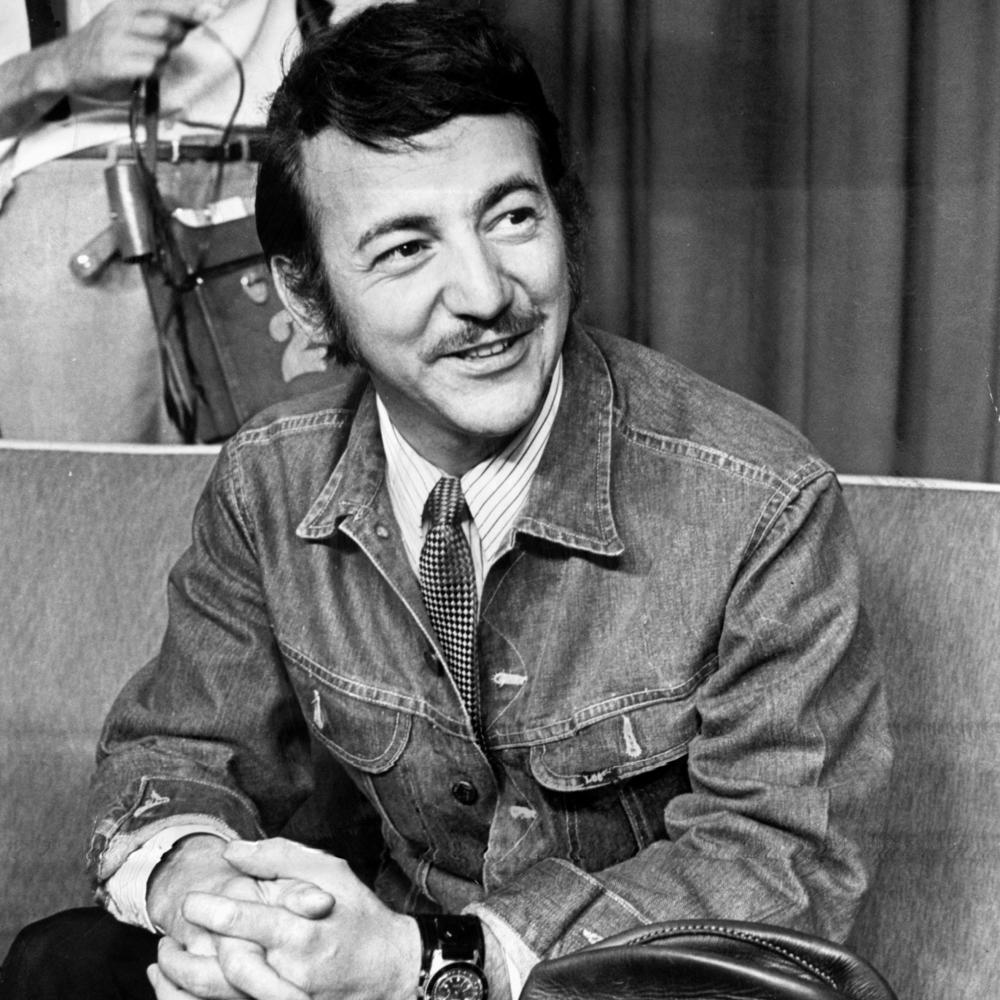
He burst out of the gates singing lightweight rock & roll for the kids before fine tuning his songs for the adults. Like many artists, he recorded a Christmas album. Decidedly unlike many white artists, his was filled with spirituals and ancient hymns sung in Latin. He recorded an album of duets with Johnny Mercer – 27 years his senior – and made instrumental records featuring his piano playing, eventually making film music with his orchestra. He gave Wayne Newton his start, handling him and finding him his signature song, “Danke Schoen”.
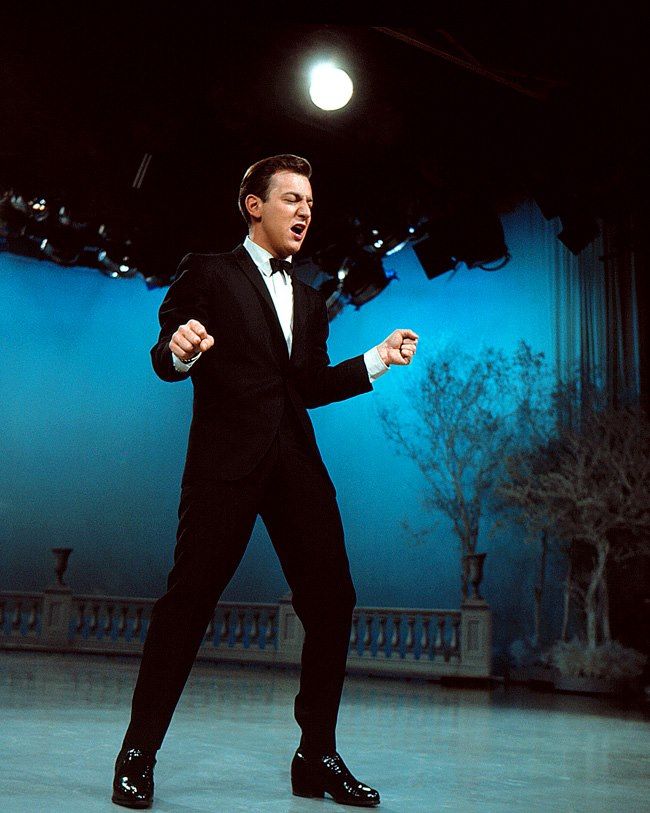
He explored folk music and show tunes before perfectly mastering the art of singing standards backed by orchestras. Indeed, he is often paired with Frank Sinatra as one of the premier purveyors of the swingin’ style. Then his friend, Robert Kennedy, was killed and Bobby learned from his “sister” that his life had been a fraud. He shed the tuxedo and put on a jean jacket. He stopped wearing his toupée and grew a moustache. He picked up a guitar and began to champion in song the plight of downtrodden people. When the record companies balked, he started his own.
No one more deserves the description of having been a shooting star, blazing brightly before burning out in an agonizingly short time, than Bobby Darin.
I love Bobby and his music so much. My heart breaks when I think of how much pain the deception brought him. We lost him way too soon. As someone with health issues, he’s a daily reminder to me that I too can be brave and keep going out there and trying my best to go on with life despite what I’m going through. Great post, Gary.
Y’know what? Thank you. I hadn’t really thought of Bobby’s story in this light. But you’re right; he provides a good reminder that poor health need not define a person. Life is precious and we should all live it to the full. Thanks for reading.
Enlightening and fascinating as always.
A case eloquently stated. A shooting star who visited and left so much in his time. Sadly missed for all that could have been. Never to be forgotten.
Well said. Thank you for reading.
Greetings!
I’m a composer and a big fan of Bobby Darin and recently was able to purchase his autograph.
I’ve been searching for a photograph to go along with the autograph, and the one you have posted is my favorite of all the “live in concert” Bobby Darin photos I have seen.
I am referring to the last color photo in your post of Bobby Darin singing in a 1960s TV show with his eyes closed and clenching his fists.
Could you kindly email me and let me know where you found the photo so that I can perhaps purchase a copy from the owner of the photo?
Thanks!
Michael Daugherty
Composer
6 Grammy Awards
Sent from my iPhone
734-276-0614
mkd@umich.edu
Thank you for reading and for reaching out, Michael. I will be in touch.